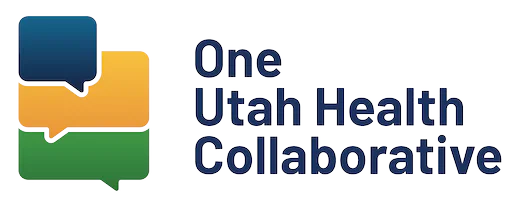
New statewide analysis brings transparency to one of Utah’s fastest-growing healthcare cost drivers
Salt Lake City — Spending on GLP-1 medications has surged in Utah over the past three years, far outpacing use and raising concerns about the long-term affordability of care. A new report commissioned by the One Utah Health Collaborative (the Collaborative) and conducted by Milliman, examines how these medications are contributing to rising prescription drug costs across Utah’s commercial, Medicare, and Medicaid markets. This analysis describes cost and utilization of GLP-1 medications in Utah using data from the Utah All-Payer Claims Database for commercial (2019–2023) and Medicaid markets (2019-2022) and CMS 100% Medicare files (2021–2022), segmented by market and year. Key findings from the report are summarized below and the data presented is gross of rebates. While GLP-1 medications can offer important benefits to patients with diabetes and obesity, they also carry significant price tags. The analysis shows that spending growth on GLP-1s has outpaced both utilization and overall drug spending trends—particularly in the commercial health insurance market. The findings reflect broader national trends but offer the first market-specific breakdown for Utah. Notably, GLP-1s are now among the top 10 highest-spend drug classes across Utah’s commercial and Medicaid programs. In Medicaid, they are now the fifth high cost drug class (Reference High Spend Drugs Report).
Most GLP-1 prescriptions remain for drugs indicated for diabetes treatment, but a growing share of prescriptions, particularly in commercial health plans, appear for drugs indicated for weight loss.
GLP-1s are a promising but costly tool in the treatment of two of Utah’s most pressing chronic conditions—obesity and diabetes. In the absence of widespread coverage policies or clinical guidelines for obesity-related use, Utah payers and providers face increasing pressure to make tough decisions about access, coverage, and clinical appropriateness. As coverage expands and demand grows, better data and evidence will be essential to ensuring these therapies are used where they offer the most value for patients and the healthcare system overall. “GLP-1s have quickly shifted from a niche diabetes therapy to a broad-reaching class of medications with the potential to transform chronic disease management,” said Dr. Sri Bose of the One Utah Health Collaborative. “This report helps stakeholders understand where we are, what’s coming, and how we can prepare.”
Key Report Findings
- Commercial Market (2019-2023)
From 2019 to 2023, utilization of non-Anti-Obesity Medication (OM) GLP-1s in Utah’s commercial market increased by more than double—from 42.3 to 86.0 prescriptions per 1,000 members. The most dramatic growth occurred between 2022 and 2023, reflecting expanded awareness, coverage changes, and broader use of newer drugs like Ozempic and Mounjaro. Correspondingly, total allowed costs rose from $53.4 million in 2019 to $116.7 million in 2023. Commercial coverage of AOM GLP-1s remains limited, but utilization still rose from 0.2 to 2.8 per 1,000 members between 2019 and 2023. This growth mirrors increasing FDA approvals (e.g., Wegovy in 2021, Zepbound in 2023) and heightened media attention. Spending on GLP-1 medications in the commercial market is led by Trulicity and Ozempic, with Mounjaro demonstrating rapid uptake since 2022.
Medicaid (2019-2022)
Utah Medicaid saw consistent increases in both utilization and cost of non-AOM GLP-1s from 2019 to 2022. Utilization more than doubled from 23.8 to 53.9 prescriptions per 1,000 members, while total allowed costs increased nearly five-fold from $3.0 million to $14.7 million. AOM GLP-1 coverage is optional in Medicaid. They are excluded from coverage in Utah however some states have chosen to cover. Trulicity has historically dominated the Medicaid market. Meanwhile, use of Ozempic and Rybelsus has expanded steadily, and newer agents like Mounjaro are just beginning to emerge.
Medicare (2019-2022)
Among Utah Medicare beneficiaries, utilization of non-AOM GLP-1s increased sharply from 91.0 to 157.5 prescriptions per 1,000 members between 2019 and 2022. Total allowed costs more than doubled from $28.6 million to $68.2 million over the same period. Although AOMs are generally not covered by Medicare, CMS has recently allowed Wegovy for patients that have both cardiovascular disease and obesity—suggesting potential future growth in this space. Trulicity remains the highest-cost and most-utilized GLP-1 in Medicare, with spending rising from $4.02 PMPM in 2019 to $10.09 PMPM in 2022. However, Ozempic and Rybelsus are gaining ground, and Mounjaro, launched in 2022, is already showing early uptake.
